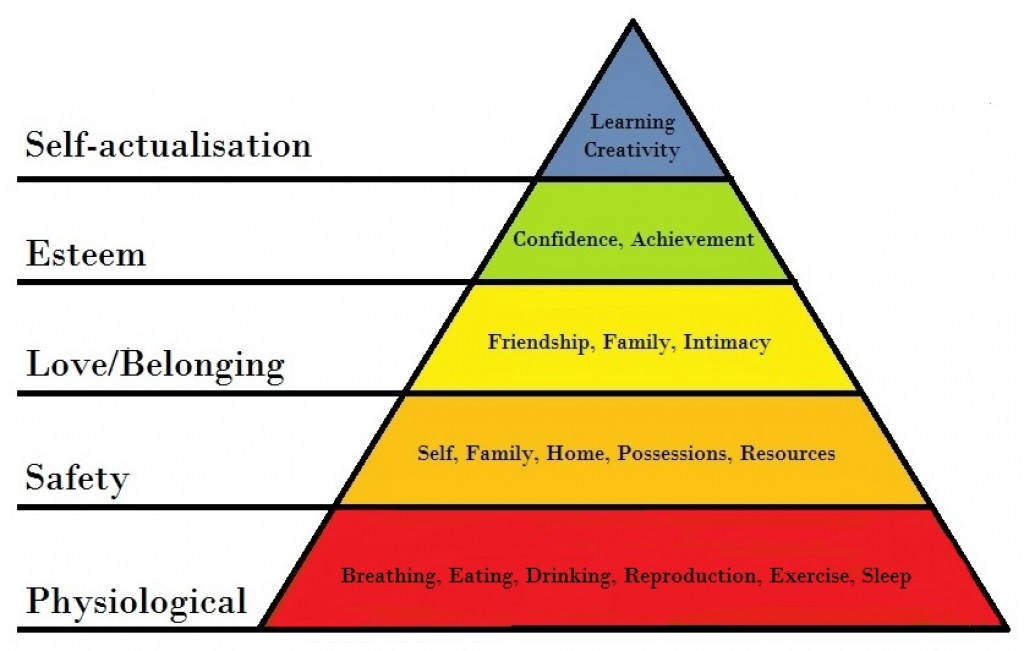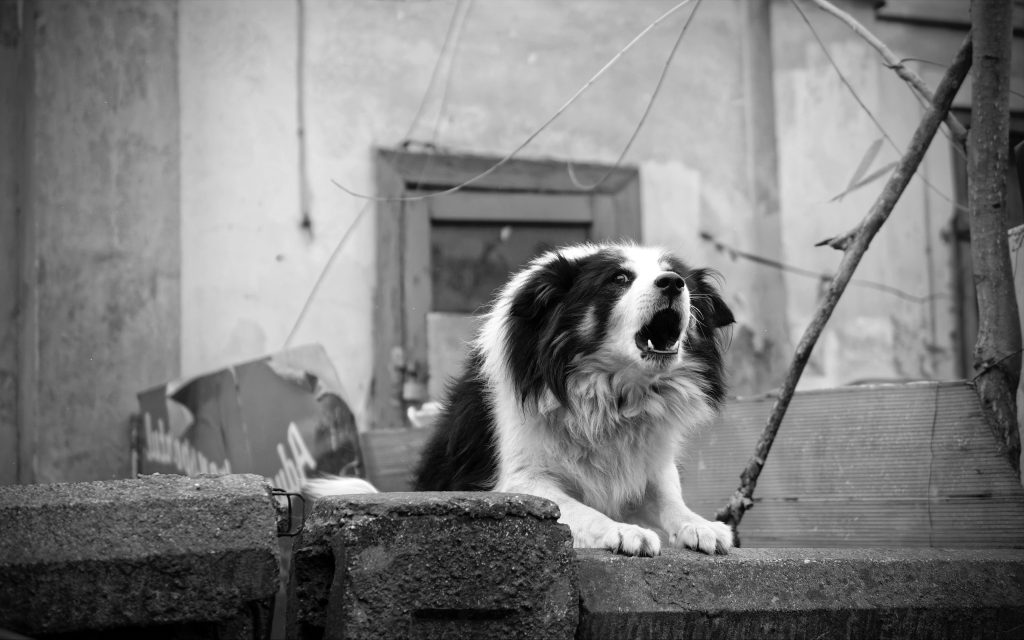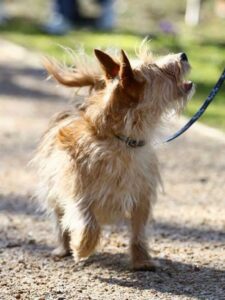Get an awesome recall. Join my 30 day, step by step program now...
Why Dogs Guard
There are lots of reason why dogs guard, but they all boil down to the fact that the dog believes something they value highly is at risk of being taken away from them. Whether it’s their favourite person, their security, or a pizza they just found on the beach, it all comes from the same place.
I go on about Maslows pyramid a lot, but almost all behaviour problems are linked back to it somehow. Maslows pyramid shows us all the dogs needs, and their order of importance. It was originally created to describe human needs, but we’re not all that different so it was easy to adapt.
If you look at the pyramid, you’ll see that the most essential needs are at the bottom. These are the ones that we physically can’t do without, such as food and water (and reproduction). At the top, the needs are still important, but much less urgent – we can suppress these, if needed. So based on this pyramid we can see that we could manage without learning a new skill, for much longer than we can go without sleep!

It’s no surprise then, that the things that most dogs like to guard are closest to the bottom of the pyramid – food, home, family, possessions, sleep, and of course, their mate!
Some dogs like to guard
Not all dogs guard stuff, of course! But, some dogs are more likely to than others, and part of that comes down to the dogs personality type. Defenders and Watchdogs are much more likely to guard than the other types. These personalities are just naturally better at it. Just the same as some people are drawn to some types of jobs more than others, some dogs are more inclined to be guarders. These guarders know where the best spot is to look out, they’ll be consistent, and they’ll confidentially go about their guarding duties.
You may not stop these dogs from guarding completely, it’s in their DNA. But, you can certainly manage it and keep it under control.
How can I help you with your dogs behaviour training?
Private Dog Behaviour Consultations are currently available online and in-person in Dundee and the surrounding area. If you are looking for help solving your dogs behaviour and training problems, please get in touch!
Stressed dogs guard!
When any of the needs in the bottom layers of the triangle aren’t fully met, fight/flight mode can be triggered. In this mode, dogs make fast decisions best suited to survival. They aren’t taking time to consider their actions carefully, they are just randomly protecting what they have – whatever that is. This means they will be much more reactive to triggers in their environment. The more stressed they are, the narrower their focus, and poorer the choices. A stressed dog will guard anything, it doesn’t have to make sense as they are not using the thinking part of their brain when they do it!
To help this dog, focus on their needs and keep them out of fight/flight mode. The calmer they are, the better they will cope with potential “threats”!
Someone has to do it!
When a dog feels particularly worried about security, this might trigger guarding behaviour. This can be the result of a traumatic experience like a burglary, or an intruder. But it also happens in homes where the boundaries aren’t clearly monitored. This can happen in any home, but it is especially likely in homes where non-family members let themselves in and out. This could be carers, extended family, or good friends. It can also happen when the home is right next to a footpath or public park. When strange people and dogs pass close to the boundary and no one responds a dog can feel quite anxious. They don’t understand fences and locks, or that you’ve given permission for people to come and go. So, this could feel quite chaotic to a dog, and can make them feel vulnerable.
This dog needs someone to actively control the boundaries. This means being obvious that you are in control at the door and fence. Or make them a safe space and keep them away from those hot spot areas.
What are they guarding?
Guarding territory
You’ll know if you have a territory guarder because they’ll concentrate their efforts on the fences, door, windows and the car. In fact, it could be anywhere you are settled for a while such as your table in a cafe or a public bench. They will be first to the front door, or boundary, if anyone arrives and they’ll get stressed if you try to keep them away. The territory guarder might mark out their boundary by scent marking in key places, either in the house, garden, or on walks. They might also appear to be more reactive closer to home compared to new places. The territory guarder might like to patrol his area by checking key locations, he’ll do a sweep of the garden every time he’s let out, and he’ll have a well chosen spot to keep lookout from.

Guarding family
This dog will feel protective over himself and his family. That might include other pets, extended family, but especially more vulnerable family members such as anxious, pregnant, disabled, or younger family members. It might even include new people that come to visit.
He’ll might be happy to let people in, but won’t always like them to leave and may even try to herd people away from the door. He will always prefer to be out front, but will make extra effort to get between you and anything he see’s as a threat. If he’s protective over you, he might like to sit on your lap or feet, alert and ready to keep people away if needed. Typically this dog won’t like shows of affection either, even between family members. He may try to get between people, or whine and cry, when they hug or show affection.
Guarding stuff
Valued possessions are anything the dog loves most including toys, food, his bed, and “found” stuff. Found stuff could be anything; some common examples might be trash, a stick, discarded pizza box, your mail, a sock, a dead thing on the beach, seagull poop – literally anything! It doesn’t have to be useful or desirable, it just has to represent something to your dog.
In possession guarding mode, your dog will do his best to prevent you from taking an item. He might try to protect it physically with his body, or show aggressive behaviour. Look out for stiff body, lip licking, and fixed eyes in the first instance. But if these behaviours have been ignored in the past, the situation might escalate past early signs very quickly.
A bit of each
It’s unlikely you’ll have a dog that fits neatly into these groups, most dogs will show a mix of traits. An experienced canine behaviourist will be able to figure this all out for you after watching your dogs behaviour at home and on the walk. But, if you are working on it yourself, start with the pyramid. You can’t make things worse by focusing on that!
How can I help you with your dogs behaviour training?
Private Dog Behaviour Consultations are currently available online and in-person in Dundee and the surrounding area. If you are looking for help solving your dogs behaviour and training problems, please get in touch!
How can I help you with your dogs behaviour training?
Private Dog Behaviour Consultations are currently available online and in-person in Dundee and the surrounding area. If you are looking for help solving your dogs behaviour and training problems, please get in touch!


